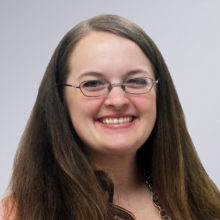by Laura Hall, CIMA®, AIF®, Senior Portfolio Manager/Director of Client Services, REDW Stanley Financial Advisors
From Capital Conversations (Summer 2018) – View Newsletter
 Curious about blockchain? Like bitcoin, it’s a new digital technology term you may have heard bandied about recently. You may have even heard it described as a secure method for people and organizations to transact business with each other without requiring a trusted, central institution to verify the information. With a blockchain, there is no central authority, like a bank, involved in the transaction.
Curious about blockchain? Like bitcoin, it’s a new digital technology term you may have heard bandied about recently. You may have even heard it described as a secure method for people and organizations to transact business with each other without requiring a trusted, central institution to verify the information. With a blockchain, there is no central authority, like a bank, involved in the transaction.
What does that mean?
Blockchain technology, referred to as a distributed ledger technology, is a means of executing digital transactions without involving a trusted third party. Participants in this distributed network agree upon a set of transactional records, and each maintains a copy of an immutable ledger of the transactions. It is a technology that no one can own or control, but anyone can use. A blockchain can be used for all types of valuable information, with potential application by just about any company involved in record keeping, documentation, registrations and transactions.
Say Again?
Core blockchain software lives on the internet and is available to anyone with a modem. It allows the creation of decentralized, publicly accessible digital ledgers, or sequential chains of blocks of data—hence the name blockchain. A blockchain is like a digital safe deposit box, though the security comes, not from secrecy or exclusive access, but from being tamper-proof. With a blockchain, no one is in charge because everyone is in charge. Everyone knows what is going on and it is extremely difficult to change the record. Blocks of data can be unchallengeable, so blockchains can provide a permanent audit trail.
How Does It Work?
At an elementary level without the very technical details, the basis for blockchain technology is a chronological transaction database that is shared and coordinated across a network of users. The first block is the initial transaction. Once a transaction occurs, a new block is added that contains a unique code linked to the prior transaction. New blocks are added through a process call securing. For example, if I give $20 to Claire and $35 to Michael, a block would list those transactions and contain the code that would tell all members of the blockchain that I started with $100 and had two subsequent transactions with Claire and Michael. The members of the network must validate the transactions before a block can be added to the previous block.
Each block is encrypted with a unique code, called a hash, and includes the common transaction details and unique signatures of the parties involved in the transactions. Securing occurs when the members of the blockchain compete to solve for the unique hash using software specifically designed for this. The first to confirm that a transaction is valid using the correct code is rewarded. All new blocks are linked to older blocks in chronological order, so all members of the network can see the transaction history and must approve of each new block added to the chain. Keep in mind that that every transaction, regardless of size, is transmitted to every individual ledger on the network and must be approved or validated by all members of the network.
If a member of the blockchain tries to make a fraudulent change to a completed block, all the blocks following the changed block must be changed, too. This is because all of the subsequent transactions are based on the now-changed block. The person who changed the block must then recode all the following transactions via the securing process before any new blocks can be added to the network. All of these changes take a tremendous amount of time and computing power. In addition, all the members of the blockchain would be aware that a change has been made to one of the blocks. This difficulty in changing a transaction provides a level of security to all of the network content and is the advantage and appeal of blockchain technology. It is almost impossible to locate all of the copies of the ledgers and change an entry before being discovered as a fake transaction.
There’s More?
Blockchain technology can be divided into two forms: public and private. A public blockchain means anyone who takes part in the transaction can also read and write within the entire database or network. A public ledger would be ideal for those networks where the members do not know each other, do not want to know the other members of the network, and do not want to disclose their identity. The private form of blockchain has garnered the attention of a growing number of businesses due to the privacy of transactions in the blockchain.
What are the Risks?
Although a blockchain has been described as tamperproof, it does not exist in a vacuum. There are risks not fully understood or even known about yet, as well as known risks. First, because blockchain is virtual and there is no central, trusted authority involved, it can and does appeal to those who operate outside legal guidelines. Second, the energy required for some blockchain systems is significant. Improvements to reduce energy needs are developing, but energy requirements are considerable. Third, blockchain is susceptible to the “garbage in, garbage out†syndrome. The challenge is to ensure that the information entered into a blockchain is an accurate digital reflection of what occurred in the real world. Last, information security is critical. A well designed blockchain should be secure and difficult to access, but experts do agree it may be possible to hack a blockchain.
So What’s the Appeal?
This permanent, distributed ledger, the blockchain technology, could result in more efficient processes with less chance for human error. Blockchain technology is being adopted across different industries as companies see the application of the technology to their internal processes and procedures. Companies including IBM, Walmart, Kodak, MasterCard, UPS, Lockheed Martin and Microsoft are beginning to use blockchain technology in their internal, private networks for things like managing data, cargo and shipments, as well as solving customer disputes. This technology could also have application in clinical trials, health information exchanges and combating counterfeit pharmaceuticals. Although not widely understood and utilized right now and a conundrum to many individuals, the technology does have application in very divergent industries, not only in the U.S. but also globally.
Keeping up with technology, its benefits and best uses is an ongoing challenge. As we continue to move from an economy based on producing material goods for sale to one based on the exchange of information, technology becomes more and more critical to our everyday lives. While REDW Stanley may not be able to help you with the technology challenges you may face, we can help with your financial challenges. Just ask.
Meet Jessica C. Salazar, Operations Specialist

505.998.3209
jcsalazar@redwstanley.com
As the first point of contact for many of our clients, Jessica sets the standard for providing the friendly and professional service REDW Stanley is known for, along with smooth and seamless operational efficiency. Now you can match a smiling face to the name!
Did you know?
- Firm section: We are pleased to announce that REDW Stanley has been named to the Financial Times’ Top 300 Registered Investment Advisors for 2018—and is the only New Mexico-based firm to make the list. The independent and objective selection process was scored on several factors, including independence, category of clients, assets under management and compliance record. No money was exchanged as part of the process. For more details, see our announcement at redwstanley.com.
- Economic section:Â The current unemployment rate for July 2018 is 3.9%. The lowest rate reported since 1968 was 3.4% in the months of September, October, November and December 1968. Source: Bureau of Labor Statistics.
- Client section:Â The next time you notice and appreciate the finely crafted wooden signs marking the entrance to a park, resort, theme park or restaurant, you may be interested to know we have a client whose business is dedicated to the fine art of designing attractive logos and crafting innovative sign solutions. They are the proud recipients of over 60 international, national and industry design awards, and celebrated their 45th anniversary last year.

© Donald Reilly
Copyright 2018 REDW Stanley Financial Advisors, LLC. All Rights Reserved. This publication is intended for general informational purposes only and should not be construed as investment, financial, tax, or legal advice.Â






 REDW LLC, one of the Southwest’s 10 largest certified public accounting and business consulting firms, is pleased to welcome
REDW LLC, one of the Southwest’s 10 largest certified public accounting and business consulting firms, is pleased to welcome 


